Imagine you run an online footwear store. You’re brainstorming ways to elevate your brand and tap into new customer bases. Suddenly, it hits you—you should partner with a high-profile loungewear brand known for its impeccable style and massive following.
Fast forward, and the collaboration is a reality. Your exclusive line, co-designed with the loungewear brand, is making waves and selling out fast. This is the power of brand collaboration in action, blending distinct brand identities to create something memorable.
Successful brand collaborations involve more than just sharing logos—they also include crafting stories and experiences that resonate with shared target audiences. Use these brand collaboration examples and best practices to launch your own.
The importance of brand collaborations
Imagine that your favorite brands join forces to launch products that combine each of their best features. Like what you see? That’s the power of successful brand partnerships and collaborations. Partnerships don’t just create buzz; they’re about sharing expertise, tapping into new audiences and markets, and delivering even more value to customers.
Here’s why brand collaborations are important.
Reach double the audience
Each brand has its own group of loyal customers. When both brands come together, they get to reach the other’s customers. It’s a win-win situation where both brands share the spotlight.
For example, one brand may have a huge fan base who loves sneakers. Another brand makes socks. Together, the two brands partner to offer sneaker lovers the perfect pair of socks. Both brands get to share and grow their audience.
Generate fresh ideas
Sometimes, a brand can get stuck in a creative rut—but when two brands collaborate, they mix their styles and come up with fresh new ideas.
Each brand can tap into the other’s design, social, and PR teams. This helps brands broaden their horizons and try out new ideas and techniques.
Create more buzz
When two companies collaborate, people notice. They talk about it with friends and post about it on social media, and the excitement spreads like wildfire. This creates a buzz that’s hard to match with regular product launches.
Build trust and credibility
If you like a brand and they team up with another brand, you might think, “Well, if brand A trusts them, maybe I should too!” Collaborations can help lesser-known brands get introduced to a bigger target audience.
If your favorite brand teams up with another one you’ve never tried, you’re more likely to give it a shot. It’s like your friend vouching for someone new.
15 successful brand collaboration examples
Understanding the value of brand collaborations is one thing, but analyzing their success is another.
Here are 15 real-life examples of moments when brands have joined forces, created standout products, and launched memorable campaigns for customers.
1. Allbirds and Adidas
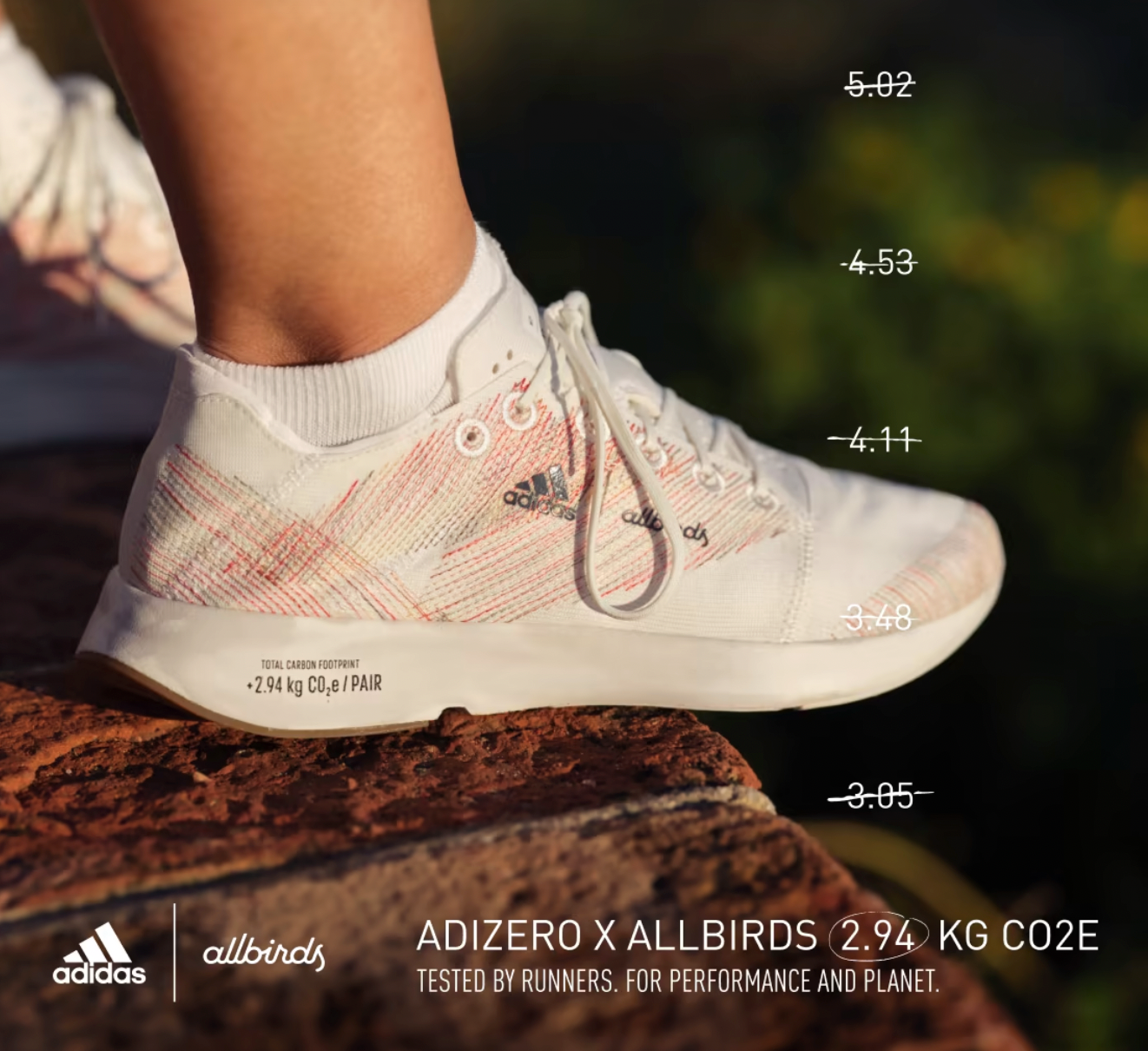
Adidas, a global leader in sportswear, and Allbirds, celebrated for its sustainable footwear, came together to design a shoe with an exceptionally low carbon footprint.
The first Futurecraft Footprint sneakers were considered the most sustainable in the world. While an average pair of Adidas sneakers has an average carbon footprint of between 10 kg and 15 kg, the new shoes had a lower footprint of only 2.94 kg of CO2 emissions per pair.
Why it works
- Shared vision: Both Adidas and Allbirds were aligned in their commitment to sustainability. While both brands approached shoe-making differently, their combined efforts were rooted in reducing environmental impact.
- Complementary expertise: Adidas brought decades of sportswear design experience to the collaboration, while Allbirds contributed its unique knowledge of sustainable materials and production methods.
- Authenticity: In a market where consumers are becoming more environmentally conscious, this collaboration wasn’t just a marketing tactic. The genuine intent behind the project resonated with customers.
Takeaways
- Purpose over profit: While collaborations often aim to boost sales, the primary focus here was sustainability, highlighting the importance of purpose-driven partnerships.
- Collaborations can drive innovation: By combining their expertise, Adidas and Allbirds pushed the boundaries of what’s possible in sustainable footwear.
- Consumer engagement: Authentic collaborations that reflect current global concerns can deeply resonate with consumers, building stronger brand loyalty.
2. Bombas and Pixar

Bombas, known for its ultra-comfy socks and “buy one, give one” model, decided to blend its designs with the whimsical world of Pixar. The result? A collection that features memorable Pixar characters on the snug fit of Bombas socks.
Why it works
- Nostalgia meets comfort: Everyone loves the warm, fuzzy feelings they get from Pixar movies. Combine that nostalgia with the comfort of Bombas socks and you’ve created a product that speaks to both the heart and the feet.
- Shared values: Both Pixar and Bombas prioritize quality and attention to detail. While Pixar crafts heartwarming tales, Bombas ensures that every stitch of its socks serves a purpose.
- Broad appeal: The collaboration reached a wide audience. Whether you’re a kid excited about Toy Story or an adult who tearfully watched Up, there’s a pair of socks for everyone.
Takeaways
- Blend strengths for success: The collaboration was more than slapping characters on socks. It was about merging the strengths of both brands––Bombas’ commitment to quality and Pixar’s storytelling.
- Engage emotions: By tapping into the cherished memories of Pixar fans, the collaboration offered an emotional connection, making the socks more than just an accessory.
- Diverse offerings attract more fans: With various Pixar characters featured, fans could find a design that resonated with their favorite movie, so the collection appealed to a broad audience.
3. Kylie Cosmetics and Kendall Jenner
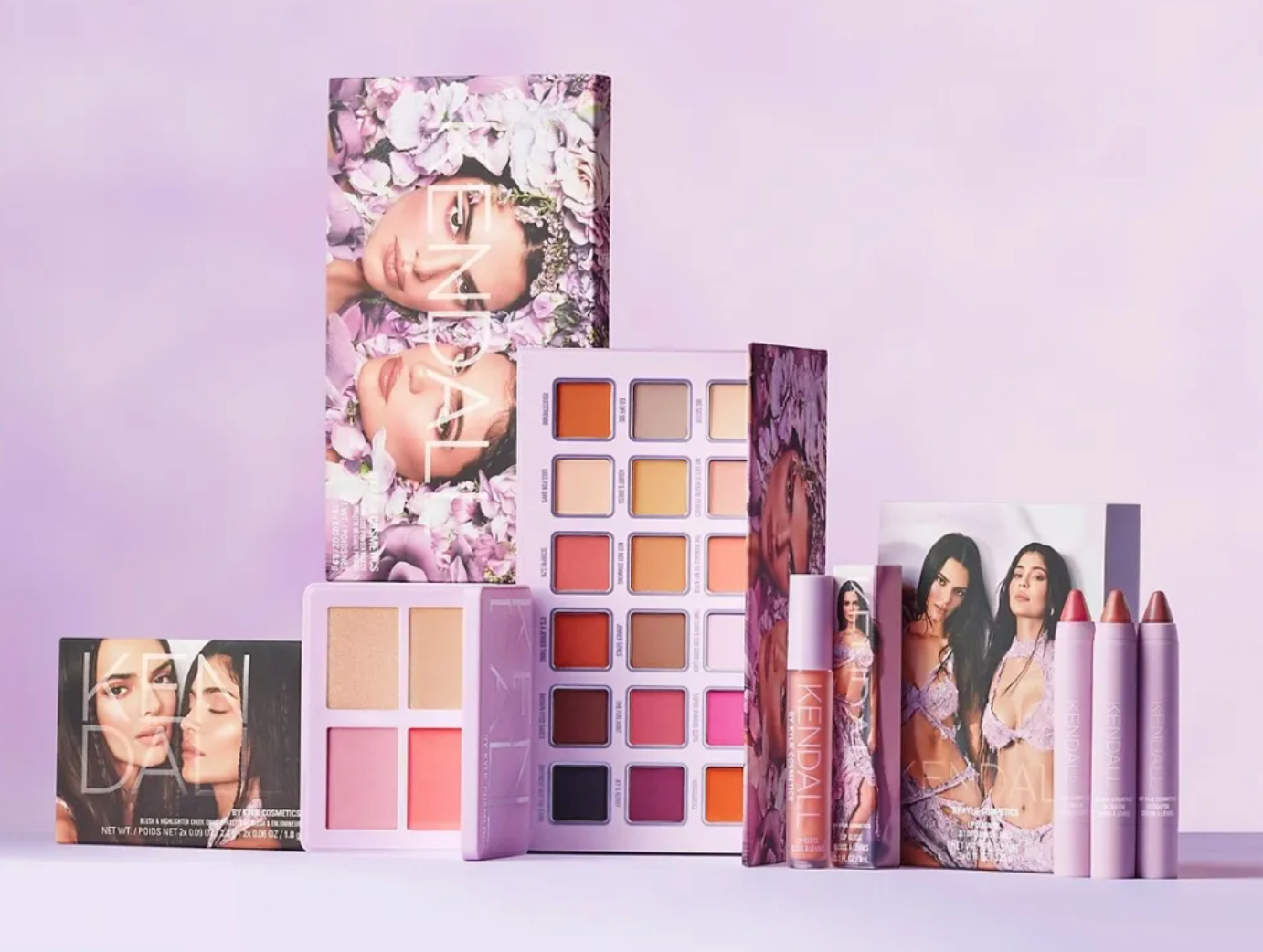
When two powerhouses in the fashion and beauty world decide to join forces on a marketing campaign, you know something special is on the horizon. That was exactly the case with Kylie Cosmetics and Kendall Jenner’s collaboration.
Kylie Cosmetics, known for its game-changing beauty products, and Kendall Jenner, a global fashion icon, decided to merge their worlds. The result? A makeup collection that’s both high-fashion and wearable.
Why it works
- Family ties: Kylie and Kendall Jenner aren’t just big names in the beauty and fashion scenes; they’re sisters. This personal connection added a unique touch, making the collaboration feel genuine.
- Balancing acts: While Kylie’s brand often leans toward bold and vibrant palettes, Kendall is known for her more natural and understated style. Together, they struck a balance that appealed to a wide range of beauty enthusiasts.
- Built-in fanbase: With both Jenner sisters having massive followings, the collaboration naturally had a lot of eyes on it. Fans of both women were excited to see what the duo would create together.
Takeaways
- Authenticity shines: Collaborations that come from genuine relationships (like family ties) often resonate more with consumers, making them feel more personal and special.
- Leveraging combined strengths: By bringing together Kylie’s makeup expertise and Kendall’s fashion-forward approach, the collection catered to both bold and subtle makeup lovers.
- Anticipation is powerful: When two influential figures hint at collaboration, the built-up anticipation can lead to significant buzz and excitement, driving success upon launch.
4. Kith and Coca-Cola

Kith, a streetwear brand, joined with Coca-Cola, a beverage giant with universal appeal. The result was a limited edition line of apparel and accessories that integrated the iconic imagery and colors of Coca-Cola with the urban style of Kith.
Why it works
- Unexpected pairing: The merging of a fashion brand with a soda company isn’t an everyday occurrence. This unexpected combination generated intrigue and excitement.
- Iconic imagery: Using the recognizable Coca-Cola logo and Kith’s modern designs, the products resonated with fans of both brands.
- Limited availability: By releasing limited-edition items, the collaboration created a sense of urgency and exclusivity.
Takeaways
- Versatility of branding: The collaboration highlights how adaptable and influential iconic branding, like that of Coca-Cola, can be when introduced into new contexts.
- Broad audience appeal: Merging streetwear with a universally recognized brand ensured that the collaboration reached varied demographics.
- Scarcity drives demand: Limited releases like this one can enhance consumer interest, creating buzz and demand for products.
5. Pura Vida Bracelets and Harry Potter

Pura Vida Bracelets, known for its handcrafted bracelets and commitment to artisans, paired up with the universally beloved universe of Harry Potter. The outcome? A collection of bracelets inspired by the iconic symbols, colors, and houses of the Hogwarts School of Witchcraft and Wizardry.
Why it works
- Shared themes: Both Pura Vida and Harry Potter value elements of friendship, loyalty, and adventure. This shared ethos was evident in the bracelets’ designs.
- Accessible magic: Fans of Harry Potter could carry a piece of their favorite world on their wrist, making Hogwarts magic accessible and wearable every day.
- Diverse range: With designs representing different Hogwarts houses and symbols, there was something for every Harry Potter enthusiast.
Takeaways
- Emotional resonance: Aligning with stories that people deeply connect with, like Harry Potter, can elevate a product’s appeal.
- Versatility is key: Melding the simple style of Pura Vida with the depth of the Harry Potter universe resulted in products suitable for various occasions.
- Celebrating fan communities: Recognizing and designing for dedicated fan bases can lead to significant engagement and success.
6. Dose of Colors and Shayla
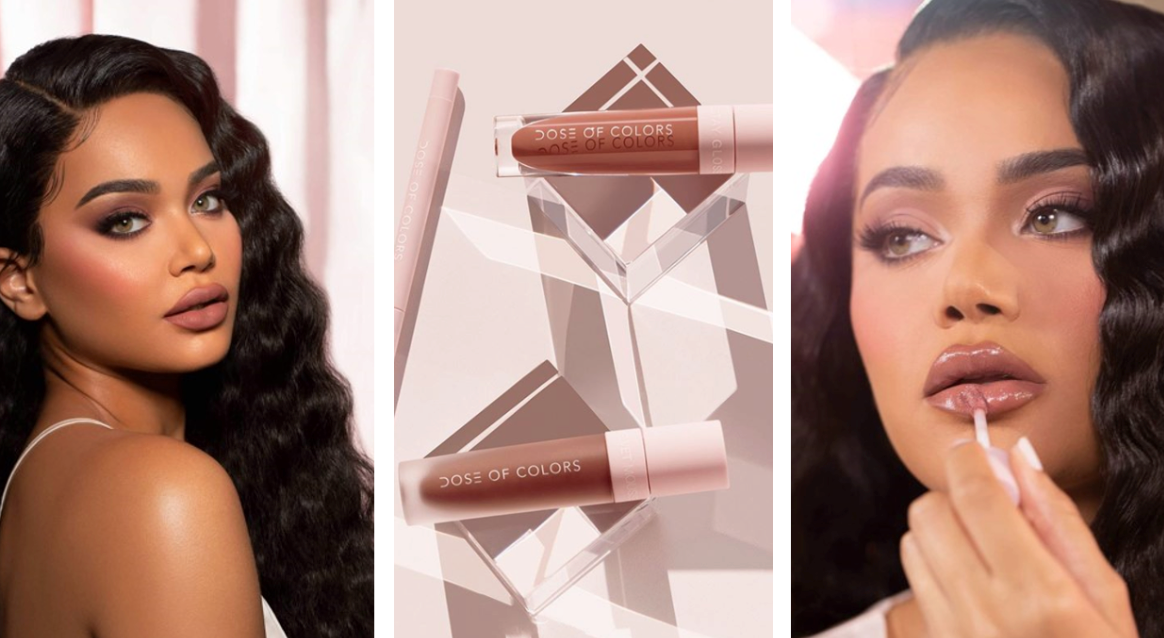
Dose of Colors is known for high-quality and cruelty-free makeup. Joining forces with Shayla, a beauty influencer known for her makeup expertise with a massive following, they introduced a line that reflected both the brand’s color expertise and Shayla’s signature style.
Why it works
- Expertise meets influence: Combining Dose of Colors’ makeup knowledge with Shayla’s industry influence resulted in products that were both expert-approved and fan-loved.
- Versatile range: The collaboration offered a range that catered to both everyday looks and more dramatic styles, reflecting Shayla’s diverse makeup tutorials.
- Authenticity: Shayla’s genuine love for the brand, even before the collaboration, ensured that the partnership felt authentic and resonated with fans.
Takeaways
- Collaborate with purpose: Partnerships work best when both parties bring something unique to the table, be it expertise, influence, or both.
- Reflect the audience’s needs: Offering a range of products that cater to diverse tastes ensures broader appeal.
- Authenticity wins: Genuine collaborations, where there’s mutual respect and admiration, often see more engagement and success.
7. Leesa and West Elm
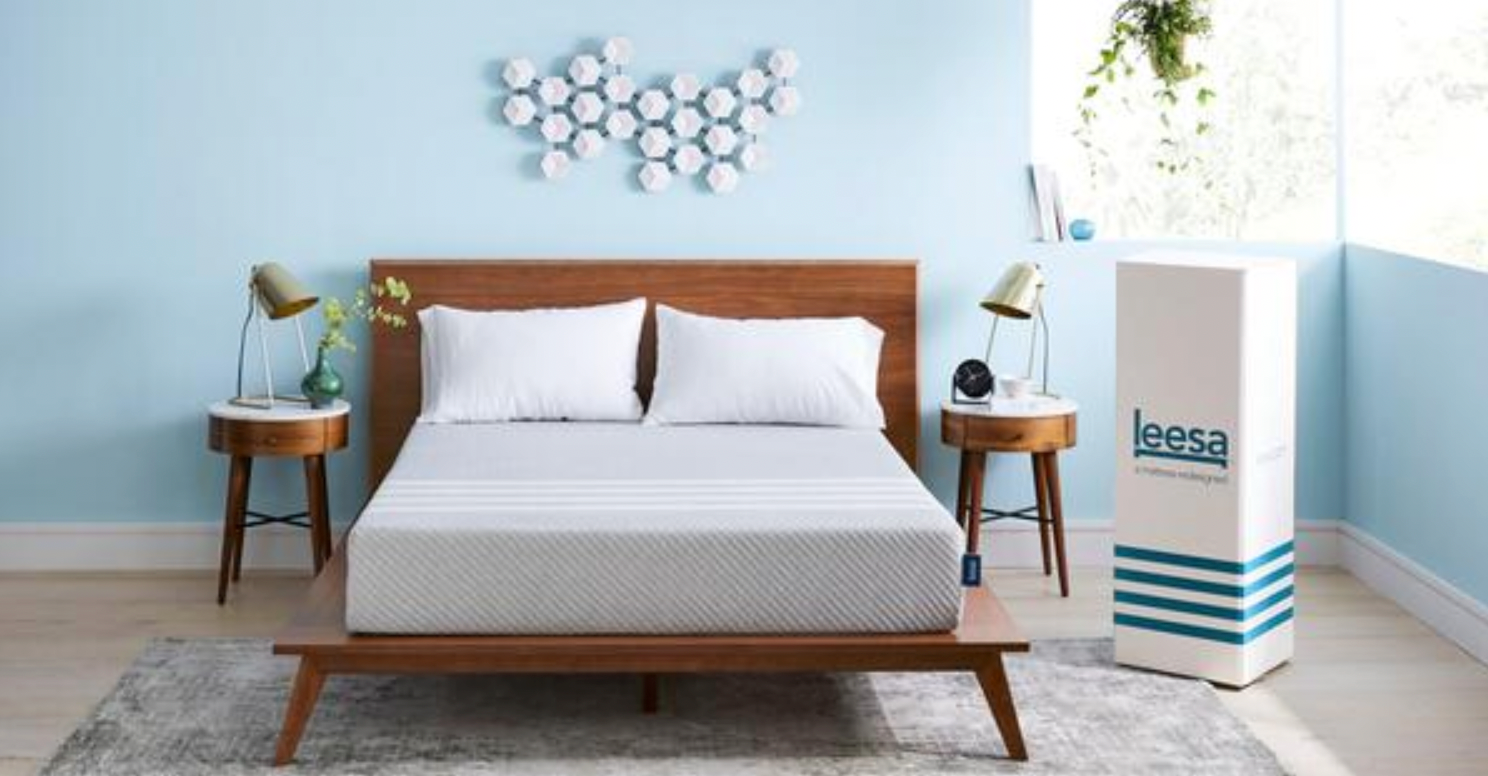
When you think of a restful night’s sleep, a quality mattress is essential—and when it comes to stylish bedroom furniture, West Elm is a name that quickly springs to mind.
Leesa, known for its premium mattresses, and West Elm, a favorite for contemporary furniture, decided to combine their strengths. The goal was simple––create an environment where customers could experience Leesa mattresses within the aesthetic setting of West Elm’s furniture lineup.
Why it works
- Try before you buy: West Elm stores provided a space where customers could experience the comfort of Leesa mattresses firsthand, making the purchasing decision easier.
- Synergy in design: Leesa’s modern mattress design complemented West Elm’s sleek furniture, offering a cohesive look.
- Shared values: Both brands have a commitment to sustainability and social responsibility, which resonated with eco-conscious consumers.
Takeaways
- Experience is crucial: Giving customers a chance to test a product in a real-world setting can build trust and boost sales.
- Aligned brand values matter: Collaborations are more seamless and genuine when both brands share similar core principles and values.
- Strength in unity: By pooling their resources and expertise, Leesa and West Elm provided a complete solution for consumers seeking both comfort and style.
8. Chubbies and Jurassic Park

Chubbies, the go-to brand for customers looking for fun-filled novelty clothing, teamed up with renowned movie franchise Jurassic Park. The outcome was nothing short of a fashion adventure: a line that seamlessly combined the daring spirit of Jurassic Park with the carefree essence of Chubbies.
Why it works
- Surprise factor: The unlikely pairing grabbed attention because it wasn’t your typical collaboration. It sparked curiosity: “Dinosaurs on shorts? I have to see this!”
- Nostalgia: Jurassic Park evokes memories and emotions for many, and blending this affection with Chubbies’ playful style created a fresh, yet nostalgic appeal.
- Broad appeal: While Chubbies catered to a particular style demographic, introducing Jurassic Park expanded their reach to movie fans and those looking for unique pieces.
Takeaways
- Dare to be different: In a saturated market, unusual collaborations can help brands stand out and capture interest.
- Tap into shared audiences: By merging distinct brand identities, it’s possible to tap into diverse customer bases, expanding reach.
- Consistent branding is key: Despite the collaboration’s unique nature, neither brand lost its essence, ensuring that core fans from both sides remained engaged.
9. Corkcicle and Star Wars

Corkcicle, the brand celebrated for its sleek drinkware, teamed up with the Star Wars franchise to create a limited edition line. The collection offered fans high-performance drinkware with a design twist inspired by the characters and themes of the Star Wars universe.
Why it works
- Universal appeal: Star Wars has a massive, diverse fanbase. Marrying its iconic imagery with Corkcicle’s practical design meant creating products with broad appeal.
- Functional meets fandom: Fans love to showcase their love for Star Wars, and Corkcicle gave them a way to do this daily.
- Exclusive feel: The limited-edition nature of the collaboration added an allure of exclusivity, making each product feel special.
Takeaways
- Tap into passion: By collaborating with a franchise as beloved as Star Wars, brands can harness the deep-rooted passion of its fans.
- Merge function with fun: Products that are both practical and enjoyable tend to resonate well with consumers.
- Limited runs create buzz: Releasing limited-edition items can generate excitement and a sense of urgency among potential buyers.
10. Pangaia and Headspace
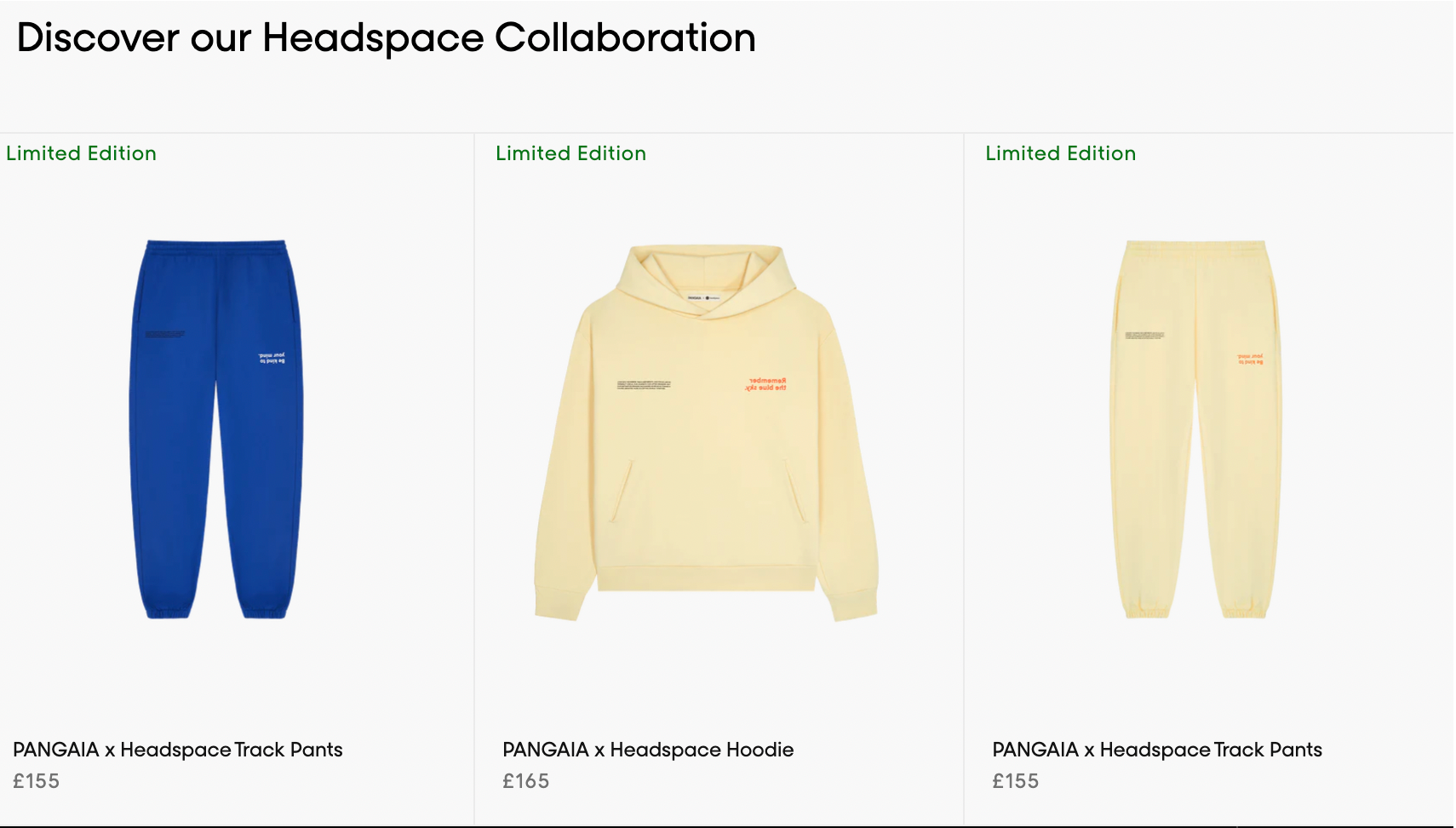
Pangaia, a sustainable clothing brand, joined with Headspace, a meditation and wellbeing app. The outcome? Products and experiences designed to nourish both the planet and the mind.
Why it works
- Shared values: Both brands prioritize wellbeing––Pangaia through sustainable fashion and Headspace through mental health. This shared commitment created a genuine and resonant collaboration.
- Holistic approach: The partnership emphasized that caring for the environment and one’s own mind are interconnected, addressing both physical and mental facets of wellbeing.
- Engaging a wider audience: While both brands have distinct audiences, the collaboration expanded their reach, resonating with individuals keen on both sustainable living and mental wellness.
Takeaways
- Aligned missions amplify impact: Collaborations grounded in shared values and missions tend to resonate more deeply with audiences.
- Resonated with both audiences: Similar to how a well-written book should appeal to fans of different genres, collaborations should appeal to both audiences.
- Authenticity matters: In today’s market, consumers can discern genuine collaborations from mere marketing tactics. Authentic partnerships, like this one, create a deeper impact.
11. OUAI and BYREDO

The beauty world buzzed with excitement when OUAI, known for its standout hair care products, announced a collaboration with BYREDO, a fragrances brand. Together, they gave beauty enthusiasts something they didn’t even know they needed.
OUAI, under the leadership of celebrity hairstylist Jen Atkin, has always pushed the boundaries of haircare. BYREDO, on the other hand, is known for its unique and memorable scents.
The two brands created a leave-in conditioner with BYREDO’s iconic Mojave Ghost fragrance.
Why it works
- Filling a niche: This collaboration introduced a product that was both practical (a leave-in conditioner) and luxurious (an elite fragrance), filling a niche in the market.
- Shared aesthetic: Both brands champion a minimalist yet premium aesthetic. This shared vision made the collaboration seamless and authentic.
- Mutual brand boost: While both brands have their dedicated fan bases, this collaboration introduced each to the other’s audience.
Takeaways
- Synergy is key: Successful collaborations often arise from brands with aligned aesthetics and values.
- Innovation drives interest: By offering something fresh and unexpected, brands can capture audience attention and stand out in the market.
- Expand by association: Collaborations are a strategic way to introduce a brand to a new set of consumers, leveraging the trust and recognition already established by the partnering brand.
12. P.E Nation and H&M
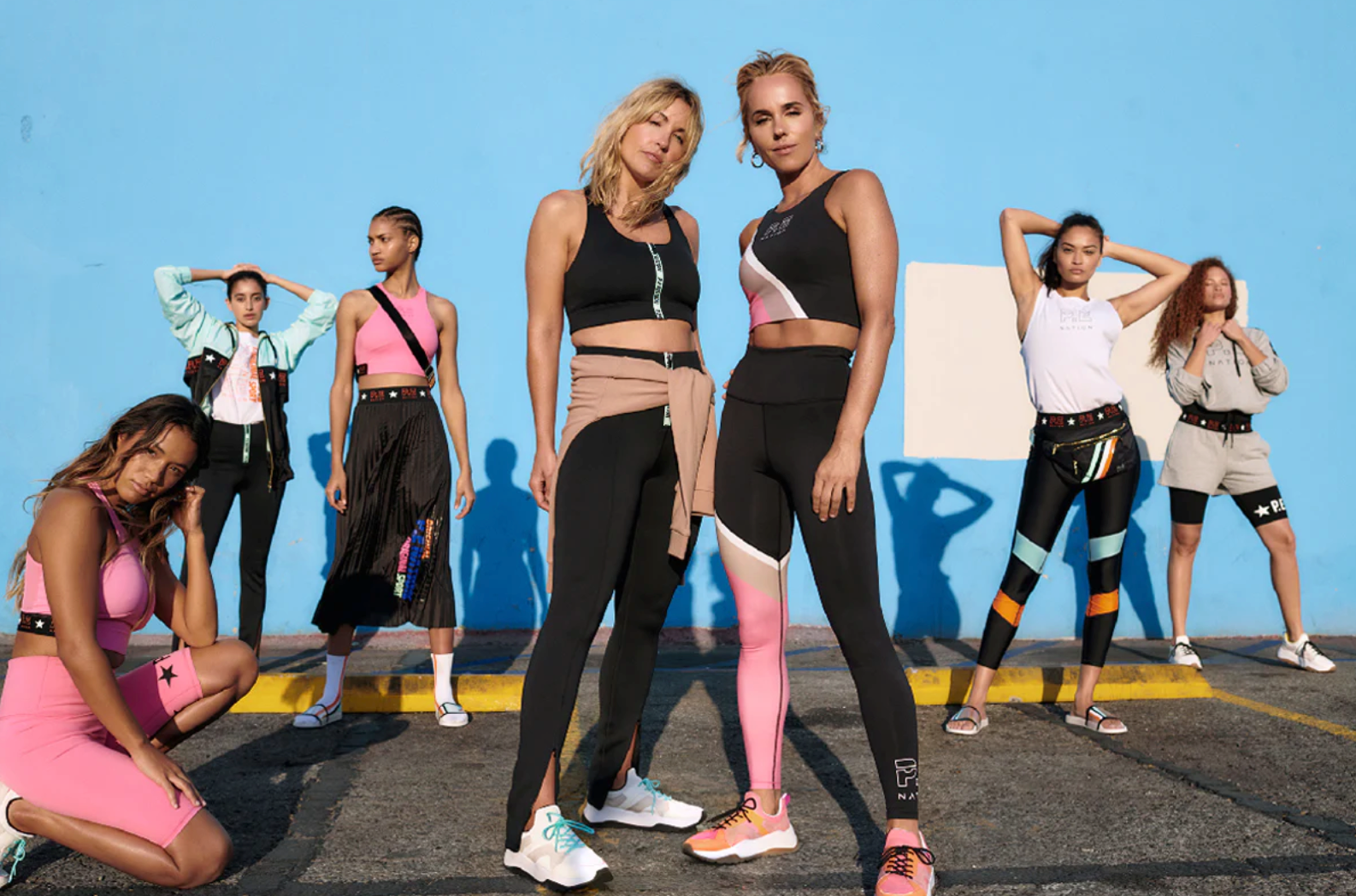
P.E Nation, known for its vibrant and urban sportswear, collaborated with H&M, a brand celebrated for its accessibility and trend-focused apparel. The resulting collection? Sporty-chic pieces that scream “style” without burning a hole in your pocket.
Why it works
- Perfect fusion: Combining P.E Nation’s athletic flair with H&M’s fashion-forward approach made for an exciting and wearable collection.
- Accessibility for all: While P.E Nation stands in the upscale market, its collaboration with H&M made its unique style approachable to a wider audience.
- Mutual boost: Both brands enjoyed the spotlight, with P.E Nation gaining global visibility through H&M’s expansive reach and H&M injecting a fresh, sporty design into its lineup.
Takeaways
- Bridging the gap: Collaborations can make luxury or niche styles more accessible to the general public.
- Shared spotlight: Partnering with a well-known brand can increase visibility and brand recognition exponentially.
- Diversity in unity: Merging two distinct styles can result in a collection that appeals to a broader spectrum of consumers.
13. S’well and Bearaby
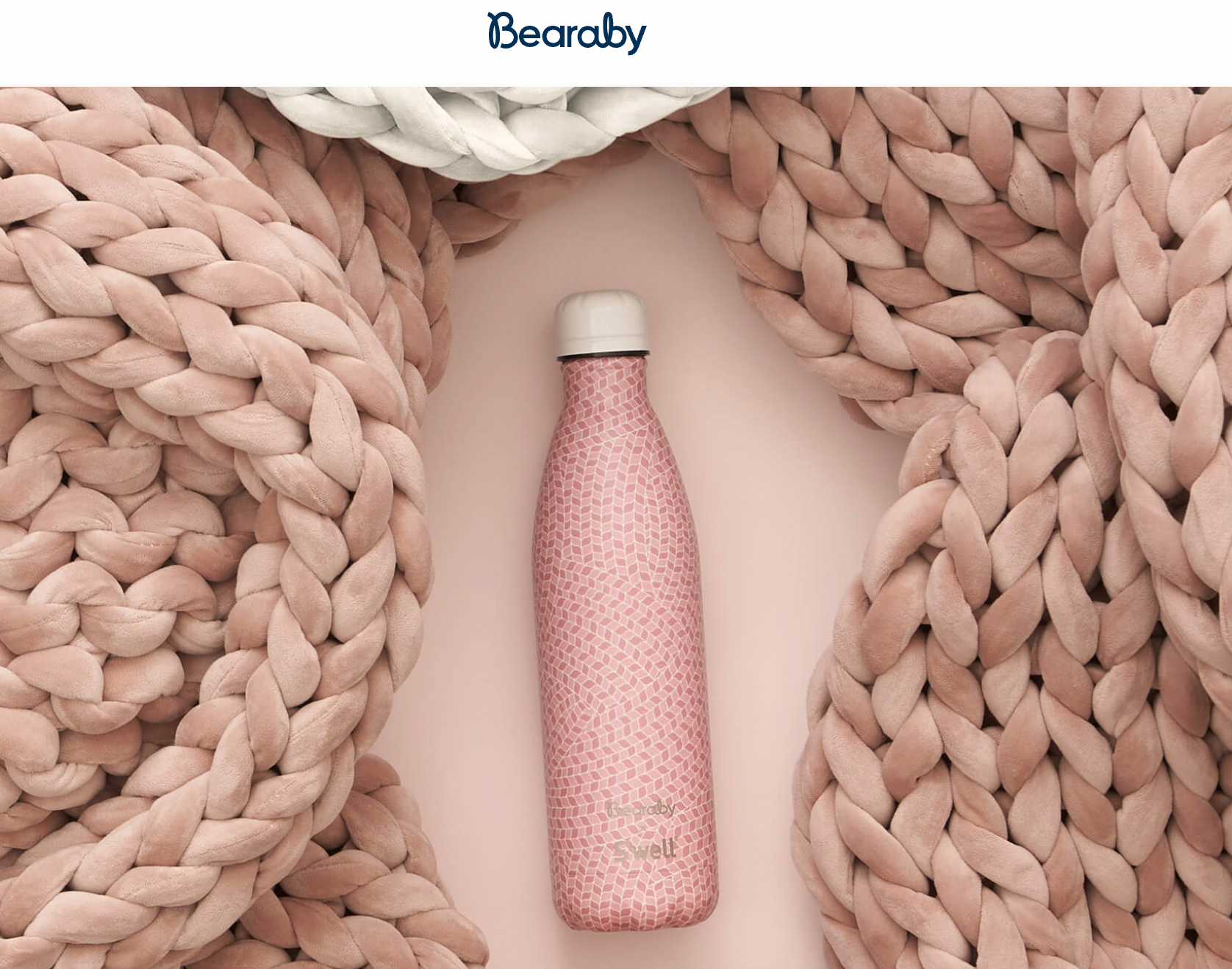
S’well’s mission has always been to reduce single-use plastic consumption with its sleek and functional water bottles. Bearaby, meanwhile, champions a good night’s sleep through its sustainably crafted weighted blankets.
Together, they crafted a limited edition line of water bottles where sustainability met comfort.
Why it works
- Shared values: Both brands prioritize sustainability. This collaboration amplified their shared mission to offer products that are good for the planet and their customers.
- Broadening horizons: While both brands cater to different market segments, their collaboration introduced each brand to the other’s customer base, widening their reach.
- Unique product line: The collaboration resulted in products that resonated with fans who prioritize eco-friendly choices without compromising on style and function.
Takeaways
- Synergy matters: The most impactful collaborations stem from brands with aligned values and missions.
- Cross-promotion expands reach: Collaborating with brands from different market segments can introduce your products to an entirely new audience.
- Sustainability sells: Today’s consumers are more eco-conscious. Brands that emphasize sustainability in their collaborations resonate well with modern audiences.
14. TeaSpressa and Greenwood Brewing
Tea and coffee brand TeaSpressa decided to take things up a notch by partnering with Greenwood Brewing. Greenwood, a Phoenix, Arizona, brewery with a commitment to fresh and flavorful brews, was the ideal partner for this venture.
The result? A fusion of beverages that cater to tea lovers, coffee aficionados, and beer enthusiasts.
Why it works
- Shared values: Both brands prioritize quality and a unique drink experience. This mutual commitment created a solid foundation for their collaboration.
- Diverse audience appeal: By merging the worlds of tea, coffee, and beer, they tapped into a broad audience spectrum, ensuring the collaboration offered something for everyone.
- Innovation: In a market where newness is cherished, this collaboration presented a fresh take on beverages, making it an exciting venture for loyal and new customers.
Takeaways
- Synergy is crucial: For collaborations to be effective, there must be a natural synergy between the brands. Shared values and objectives make the partnership more authentic.
- Broaden the horizon: Venturing beyond the traditional scope of your brand and merging different worlds can result in exciting and unique offerings.
- Stay true to brand values: While innovation is key, it’s vital to ensure that any new product or collaboration remains true to the brand’s core identity.
15. Brooklyn Candle Studio and Pura

Brooklyn Candle Studio makes eco-friendly scented candles and found an ideal partner in Pura, a home fragrances brand. Together, they created a Pura Smart diffuser, infused with some of Brooklyn Candle Studio’s signature scents.
Why it works
- Shared passion for fragrance: Both brands, at their core, are all about creating immersive fragrance experiences. This mutual love for scent set the stage for their collaboration.
- Eco-consciousness: In today’s world, where sustainability is key, both brands prioritize eco-friendly practices, making their partnership resonate with a conscious audience.
- Complementary expertise: While Brooklyn Candle Studio brings mastery in scent, Pura adds its innovative touch with fragrance diffusion. This complementary expertise ensured a holistic fragrance experience for users.
Takeaways
- Aligned brand values matter: Successful collaborations often stem from brands with aligned core values, ensuring a genuine partnership.
- Leverage each other’s strengths: Rather than overlapping, the best collaborations allow each brand to bring its unique strengths to the table.
- Engage the community: Both brands have strong communities of fragrance lovers. By combining forces, they engaged—and excited—an even broader audience.
What successful brand collaborations have in common
Ever wondered why some brand collaborations make headlines and stay in our minds for a long time, while others just fade away? It’s not just luck: there are certain things that top collaborations have in common. Let’s uncover these “secret ingredients.”
Shared values
Imagine two friends who get along because they both love playing tennis. This kinship is the same with brands. When two iconic brands have similar beliefs or values, their partnership feels genuine—and this creates a bond not just between the brands, but also with their customers.
Clear communication
Think of a group project at work. The process goes smoothly when everyone talks and understands each other. In successful co-branding partnerships, brands communicate clearly with each other. They discuss ideas, sort out differences, and make plans, which ensures that everyone is on the same page.
Complementary strengths
Each company brings its own strengths and resources to a partnership. By combining strengths, brands can create a product or campaign that they couldn’t have done alone.
Listening to their audiences
Smart brands always keep an ear out for what their customers are saying. By understanding what their fans love, brands can create collaborations that truly resonate.
A win-win situation
Both brands should benefit from the partnership. If only one brand gets all the attention or sales from the ongoing partnership, it’s not a true collaboration. The best partnerships ensure that both brands grow and succeed together.
Use these brand collaboration examples to inspire your next retail partnership
Brand collaborations can spark innovation, captivate new audiences, and create memorable products that stand the test of time.
When you find a retail partner that fits well with your growth goals and your ideal customer base, you can do great things together. Start by analyzing these 15 brand collaboration examples and figure out how you can replicate their success in your future partnerships.
Read more
- Retail Partnerships: How to Collaborate with Other Stores (+ 9 Examples)
- How to Grow Your Retail Business with Brand Licensing
- Product Branding: How to Give Products an Identity
- 6 Examples of Retail Gamification to Boost Engagement and Sales
- Creative Facebook Tactics: 13 Expert Tips to Amp Up Your Retail Social Strategy
- Hyper-Personalization: 4 Examples of Retailers Doing it Right
- How to Make Your Product Copy More Persuasive
- 24 Retail Blogs Every Small Business Entrepreneur Should Be Reading
- What Retailers Can Learn From The Museum Of Ice Cream’s Sweet Success
- 4 Easy Ways to Get Better Reviews on Your Google Places Page
Brand collaboration examples FAQ
What is a brand collaboration?
What are some examples of successful brand collaborations?
Some successful brand partnerships and collaborations include:
- The Nike and Apple partnership brought us the Apple Watch Nike edition, blending tech and fitness.
- H&M and designer brands like Versace and Balmain have also teamed up to offer high fashion at more affordable prices.
- The Oreo and Supreme collaboration combined a classic cookie with a streetwear giant to create a novel treat.
These collaborations work well because they bring together the best of both brands, which excites customers and often creates memorable moments in branding history.
What are the benefits of a brand collaboration?
- Larger audience reach: By partnering with another brand, a company can tap into a new customer base. This helps both brands gain more visibility.
- Shared resources: Collaborations allow brands to share the cost of marketing and production, making it more cost-effective than going at it alone.
- Increased credibility: When a smaller brand partners with a well-established one, the newer one can gain credibility and trustworthiness in the eyes of consumers.
- Innovation: Two brands coming together can combine their unique ideas and strengths, leading to innovative products or services.
- Boosted sales: The excitement around a collaboration can lead to a surge in sales, as consumers are often eager to purchase limited-edition collaborative products.
- Cross-promotion: Each brand can promote the other, multiplying their promotional efforts and content reach.





